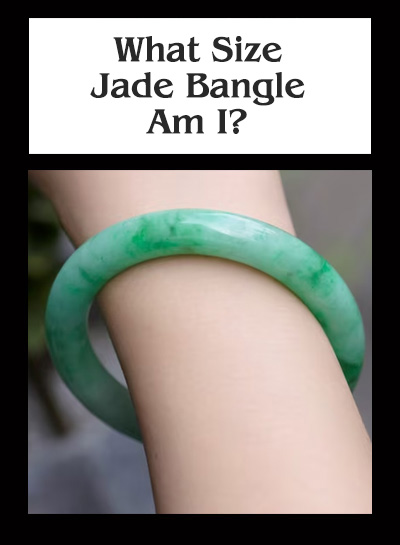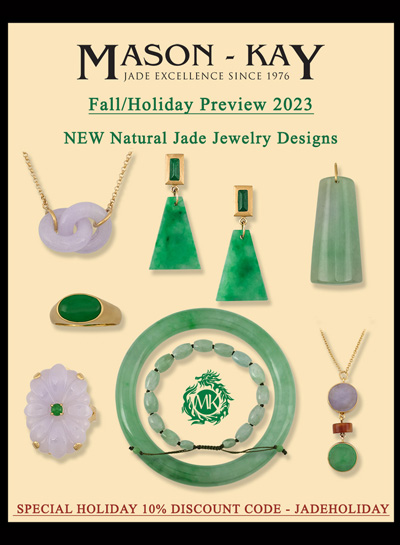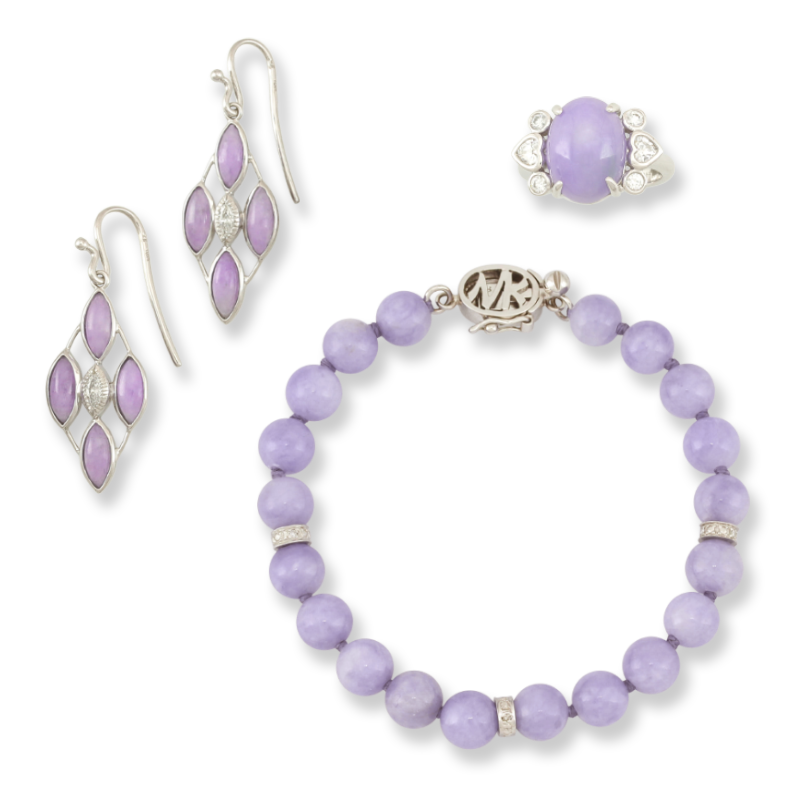
Natural vs. Treated Jade
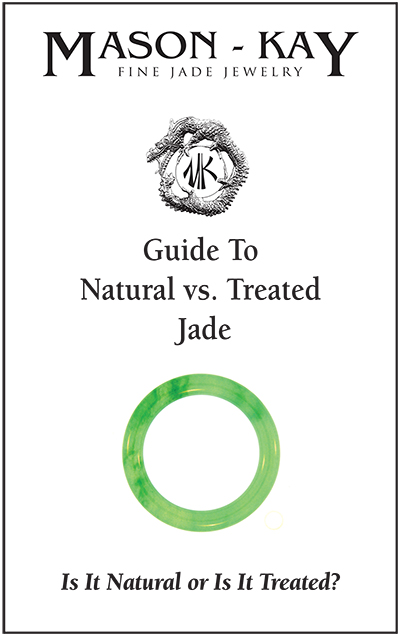
A Brief History
There are two types of treatments for jadeite jade. Dye and polymer impregnation - often used together.
Dyed jadeite has existed for decades and is detectable using standard spectroscopy. It was not common before the 1980’s.
In the early 1980's a new kind of jadeite appeared in the markets of East Asia. This material had a light, bright body color and good translucence. Some dealers noticed a ‘spidery’ texture when viewed under 20x magnification. Prices were reasonable for such quality - too reasonable - based on values at the time. This marked the beginning of what has since been called ‘B’ jade, which continues to be by far the most common form of treated jade.
Buyer Beware - Consumers should make sure to purchase jade only from a reliable source and ask for a guarantee.
Jade Classifications
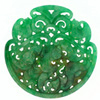
Natural, untreated jadeite jade. Only beeswax is used to fill the stone’s microscopic surface pores - as has been done for centuries.
All Mason-Kay Jade is Guaranteed to be ‘A’ Jade!

Acid-bleached, polymer-impregnated jadeite jade.
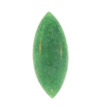
Dyed jadeite jade . ‘C’ jade, usually pre-dates the impregnation era.
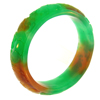
Acid-bleached, impregnated and dyed jadeite jade.
How Can You Tell If It’s ‘B’ Jade?
Even experts cannot be certain by eye alone whether or not a piece is ‘A’ or ‘B’ jade. Standard gemological testing is inconclusive (refractive index and specific gravity are either unchanged, or insufficiently changed to make a definitive conclusion). Hardness can be affected, but to test for it means marring the stone permanently. So how to be certain a stone is ‘A’ or ‘B’?
First of all, ask. Sometimes you might hear a straightforward answer. If not, the best clue is price vs. value. If it's too good to be true, it usually is. Also, be suspicious if the stone exhibits brightness and translucence, and is a calibrated size. Under examination with a loupe, if there is a web-like consistency on the jade’s surface or if the color appears to ‘float’ in the stone, also be wary.
In 1990 the GIA (Gemological Institute of America) developed a technique that definitively, and in a non-destructive manner, can test for the presence of polymers within a jade’s interior: infra-red spectroscopy. Polymers leave a tell-tale trace in the infra-red spectrum. A machine called an infra-red spectrometer can detect this trace quite clearly. Mason-Kay has been equipped with its own infra-red spectrometer since 1995. They are well known for their testing and evaluation services to the jewelry industry.
What About Disclosure?
The FTC (Federal Trade Commission) guidelines for gem enhancement require disclosure if the enhancement is not permanent, requires special care or significantly affects the value of the gemstone. With full disclosure, the selling of 'B' jade is acceptable. However, many retailers and wholesalers in the U.S. and abroad continue not to disclose. Read more.
How is ‘B’ Jade Made?
Poor quality jade rough with internal ‘staining' and/or structural flaws is immersed in a powerful acid (sulfuric or hydrochloric) which is sometimes heated to increase its strength. This emersion process can be repeated and can last for several weeks. The working fumes are quite toxic and this procedure is not without risk. The resulting stone has now been changed: the sodium in the sodium silicate of jade’s structure has been leached out and with them the internal stains. At this point, many experts say, the stone is no longer jadeite jade at all. The stone is then put into a neutralizing agent, after which it is impregnated with polymer with the use of a centrifuge. The stone is then entirely covered with a hard, clear plastic-like coating. Cutting and polishing are then performed as they would be on any jade stone.
Is 'B' Jade as Durable as Natural Jade?
No. ‘B’ jade can, in time, become unstable and often discolor. In contrast to natural jade's renowned durability, 'B' jade can be so brittle as to fracture with only minimal impact. Heavy prongs or bezels can actually penetrate the weakened surface of the treated stone. Even ordinary household detergents and simple acetone (used for cleaning & removing natural jade from glued settings) can break down the polymer. There are even reports of ‘acid leaks’ from improperly neutralized stones which can result in skin burns.
How Much is ‘B’ Jade Worth?
Its value is considered to be approximately 5% to 10% of the value of its ‘A’ jade equivalent. Although for some, ‘B’ jade has no value because it is no longer truly jadeite. The value of ‘C’ and ‘D’ jade is worth between $2-$20.
Mason-Kay is pleased to provide this concise guide to Natural Jade vs. Treated Jade. Treated and dyed jade has been a concern for many years. It is important for both retailers and consumers to be aware of the potential risk.
Related Blog Posts by Jeff Mason, G.G.:


